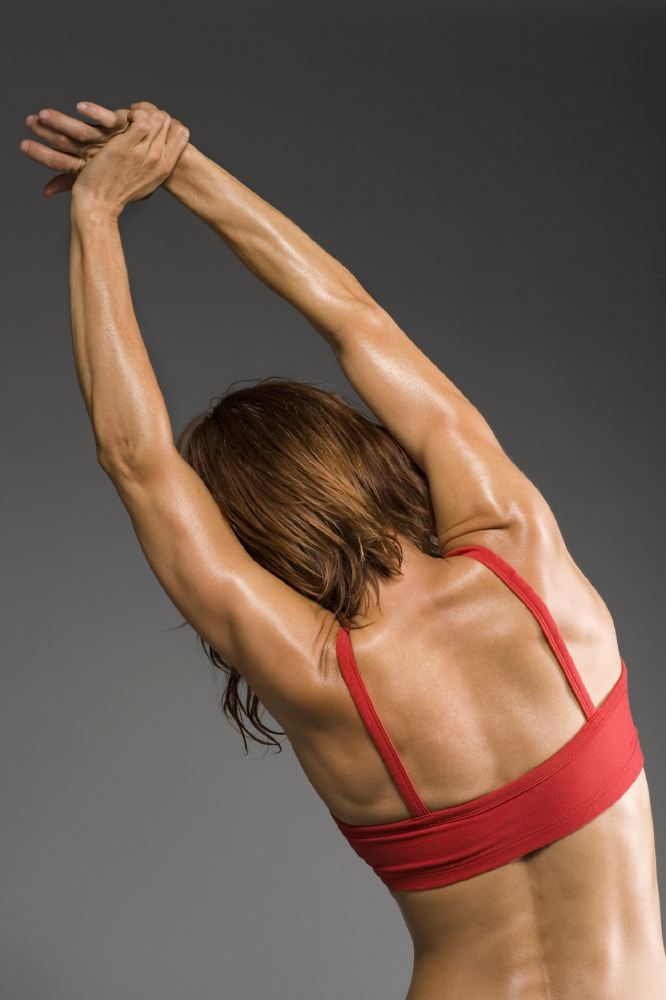
It's important to warm up and stretch before a workout
When it comes to exercising, most people pay cursory attention to warming up.
Yet according to top personal trainer Greg Brookes, warming up properly could increase the effectiveness of your exercise routine while keeping you out of the Physio's office.
Here are Greg's Three Top Tips for an Effective Warm-up:
#1 - Joint Mobility
The further you can move your joints through their active range of movement the more mobile you are. As we age we lose mobility through the joints and become less and less mobile. Good mobility truly is the fountain of youth.
A good mobility routine will not only help to lubricate the joints with synovial fluid but it will also help to maintain a good level of joint mobility. The stiffer the joints become the more laboured the movements become. It takes a lot more energy to move a stiff joint through its range than a mobile joint through its range. You will improve your economy of movement by increasing your mobility.
Your mobility also has a direct impact on the way your body moves as an integrated unit. If you have tight hips then your lower back will need to become more mobile in order to move fluidly. If you have tight ankles then your knees will need to compensate in order to deal with uneven ground.
Most of the injuries I see and rehabilitate come from a lack of mobility somewhere along the kinetic chain! Joint mobility should be approached systemically from head to toe spending more time on stiff joints and less time on mobile joints.
Take Action: start at the neck and work your way downwards. Think about how the joint works so for the neck: look left and right, up and down, and take the ear to the shoulder on both sides. Next move on to shoulders, elbows, upper back, hips, knees, ankles, and wrists.
# 2 - Integration
Prepare the body for exercise by integrating your body.
Your body consists of small stabiliser muscles that keep your joints in place and larger prime mover muscles that do all the heavy lifting. The easiest way to integrate your stabiliser muscles with your prime mover muscles is to challenge your balance. As your balance gets challenged your nervous system works overtime and survival systems get turned on. Ever noticed how alert you are when challenged with a survival situation.
Another important part of integration is activating your right and left brain hemispheres. Your right brain communicates with the left side of the body and the left brain with the right side. Simple ways to integrate the 2 brain hemispheres are to perform cross body movements that cross the centre line.
Take Action: standing tall slowly bring your knee to your opposite elbow, place your foot back down and repeat on the other side. This movement will not only challenge your balance but integrate your brain hemispheres too.
#3 - Movement Preparation
Movement preparation involves practicing specific movements that mimic the movements that you will be using in your workout. Jogging on a treadmill or sitting on an exercise bike for 5 minutes have no direction correlation with a workout that is focusing on Squats or Deadlifts.
If your workout is focused on Squats then you need to perform some bodyweight squats or light squats prior to your workout. In other words practice the movement patterns that will be used in your workouts.
Movement preparation based exercises not only copy the exact movement patterns in preparation for the workout but they also give you time to improve them. So if your squat pattern is bad then now is the time to really work on improving technique before adding further load.
Take Action: if your workout involves squatting movements then perform 10 Bodyweight squats, if you are going to be running then lightly run on the spot and practice some light hopping movements.
Tagged in exercise fitness tips Workout

